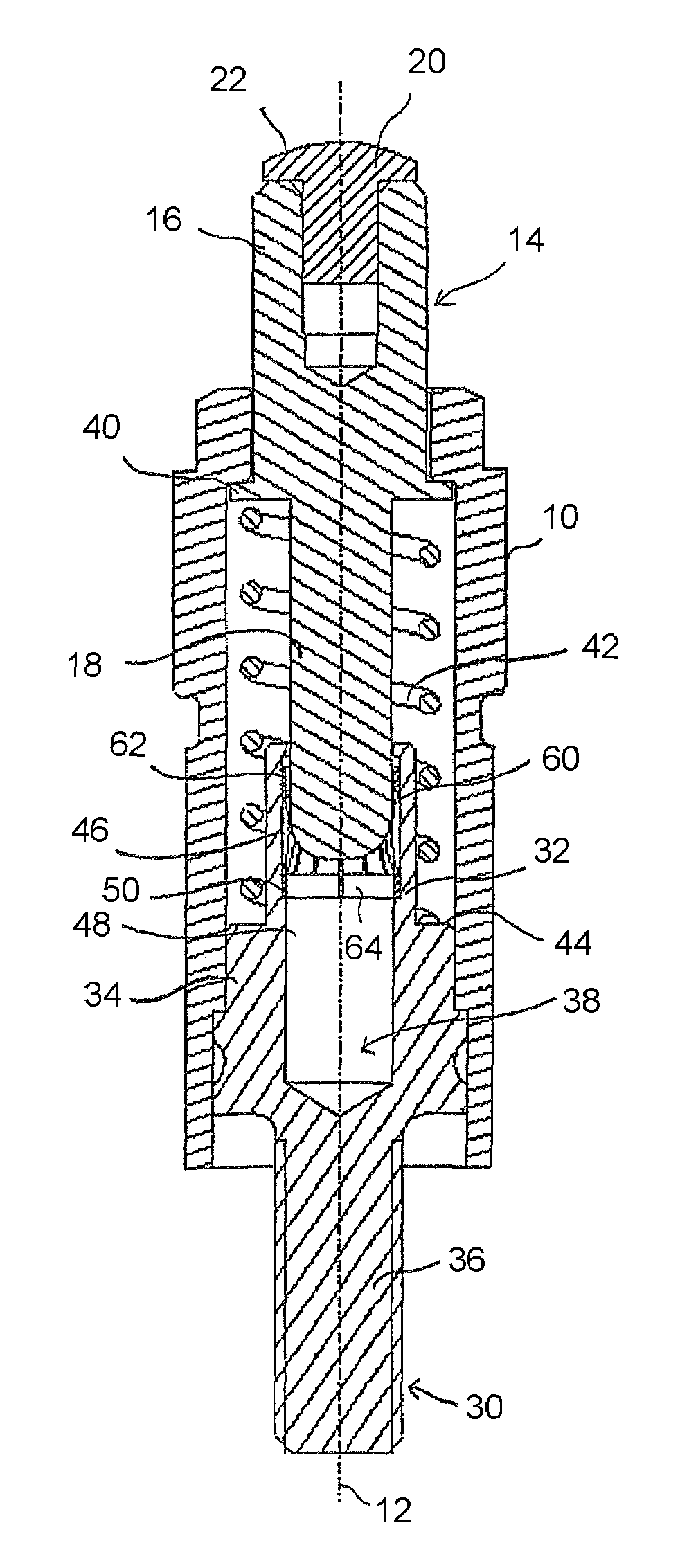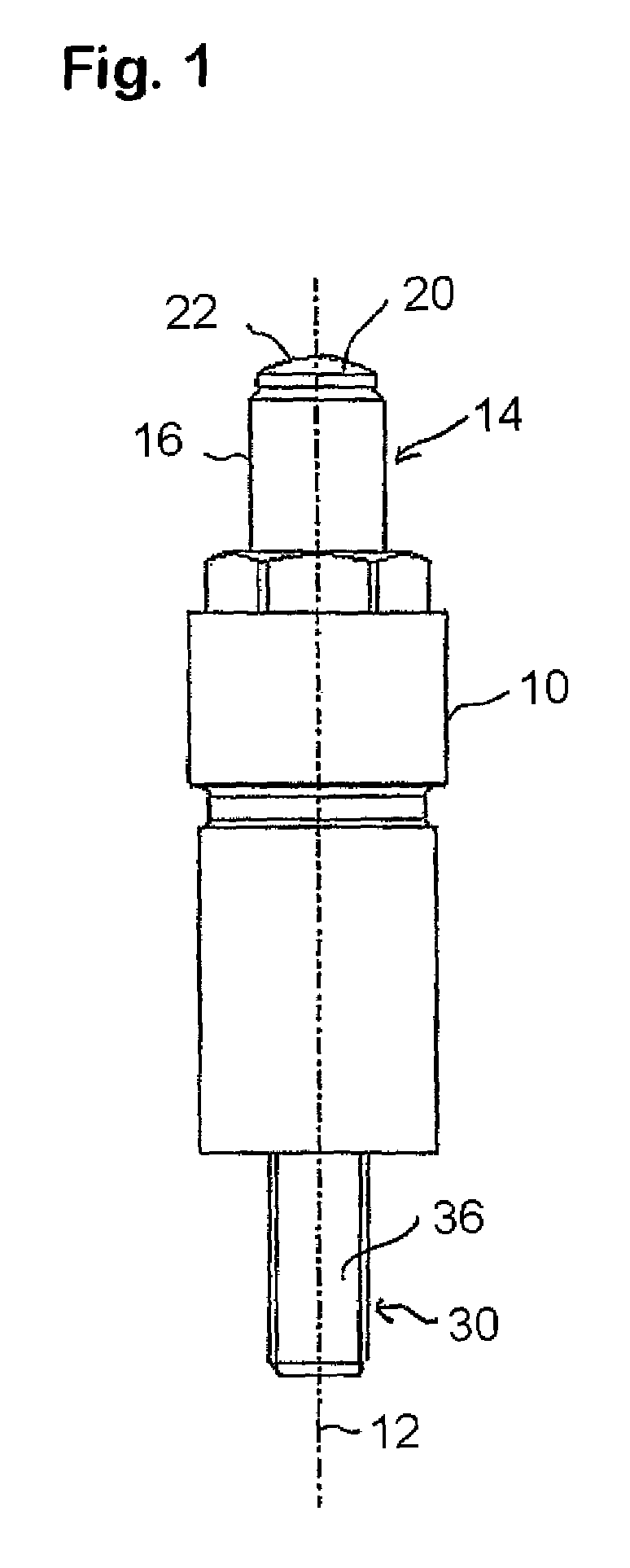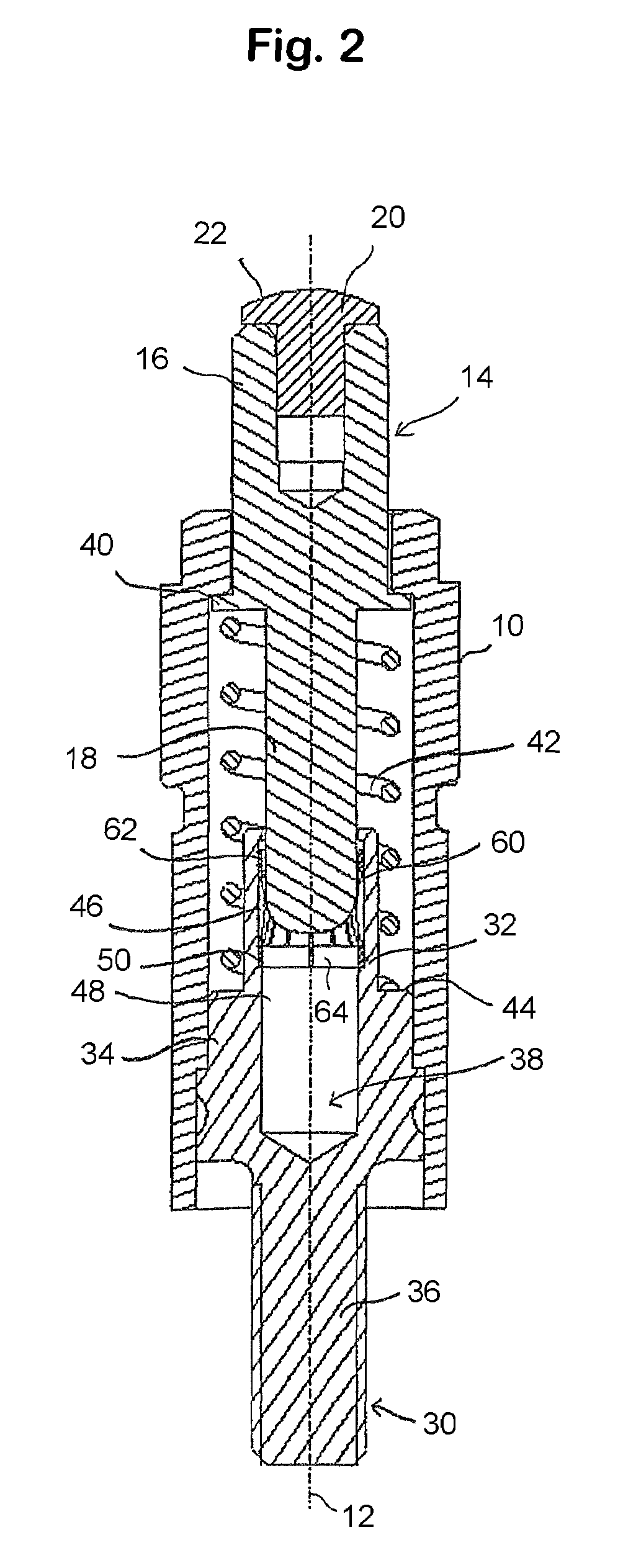Electrical pressure contact
a pressure contact and electric technology, applied in the direction of coupling contact members, electrical appliances, coupling device connections, etc., can solve the problems of affecting the effectiveness of contact grease, affecting the use of degreasing cleaning means, etc., and achieves the effect of reducing the diameter of the contact element, preventing damage, and being held securely and stably in the bor
- Summary
- Abstract
- Description
- Claims
- Application Information
AI Technical Summary
Benefits of technology
Problems solved by technology
Method used
Image
Examples
Embodiment Construction
[0033]FIGS. 1 through 5 Illustrate an exemplary embodiment of the electrical pressure contact in accordance with the invention with a housing sleeve 10, which has a contact facing end, the upper end in FIGS. 1 and 2, and an away from the contact facing end, the lower end in FIGS. 1 and 2. The housing sleeve axis is indicated with reference number 12.
[0034]A contact head 14 is axially movably arranged in the housing sleeve 10. The contact head 14 has a first end or contact facing portion 16, which, in the condition of the pressure contact illustrated in FIG. 2, protrudes from the contact facing end of the housing sleeve 10, and a second end or an away from the contact facing portion 18, which is located within the housing sleeve 10 forming an elongated member. The diameter of the contact facing portion 16 is larger than that of the away from the contact facing portion 18.
[0035]In the contact facing end of the portion 16 of the contact head 14 is inserted a contact rivet 20, for examp...
PUM
 Login to View More
Login to View More Abstract
Description
Claims
Application Information
 Login to View More
Login to View More - R&D
- Intellectual Property
- Life Sciences
- Materials
- Tech Scout
- Unparalleled Data Quality
- Higher Quality Content
- 60% Fewer Hallucinations
Browse by: Latest US Patents, China's latest patents, Technical Efficacy Thesaurus, Application Domain, Technology Topic, Popular Technical Reports.
© 2025 PatSnap. All rights reserved.Legal|Privacy policy|Modern Slavery Act Transparency Statement|Sitemap|About US| Contact US: help@patsnap.com



